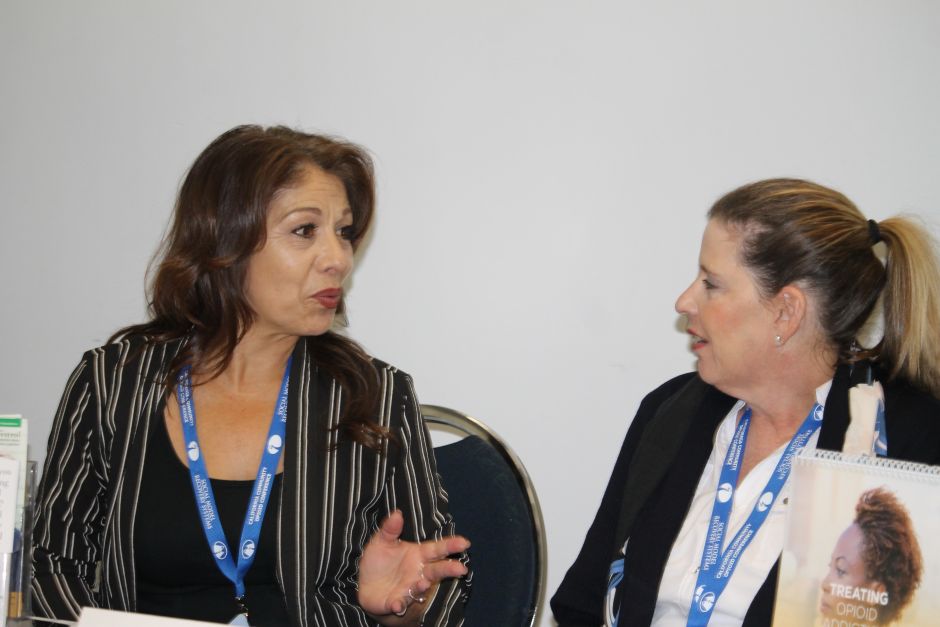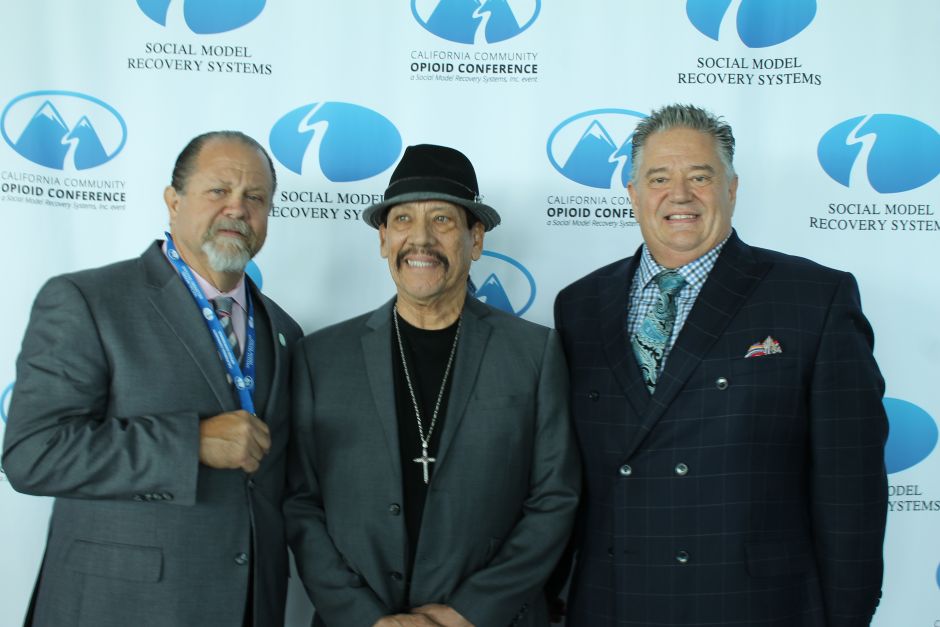During the second annual community conference, actor Danny Trejo narrates the nightmare of addiction and his path to recovery
At some point in the nightmare he lived because of his drug addiction, María Reyes almost lost his right arm because he injected heroin and repeatedly attempted suicide.
“I lived in a family of opioid and methamphetamine addicts. From a young age I was exposed to that environment, ”he said. "I was barely 12 when I was curious to try (drugs) and I liked them."
Maria, today a program coordinator at Social Model Recovery Systems – a nonprofit organization that serves addicts in Los Angeles and Orange counties – said she decided to stop 10 years ago.
She was forced to enter the treatment center where she now works.
"The whole process of my addiction was painful, I almost lost my arm from injecting heroin," said Maria, now 59 years old.
"For me, it is painful to see when young people come to try to get away from a life of drugs, but there I am and many others to help them know they have hope."
This week, the managers of Social Model Recovery Systems organized for the second consecutive year the annual Opioid Conference in California at the Anaheim Convention Center.
Experts in addiction medicine, public defenders, former addicts and those who understand the dangers and losses associated with opioid use disorder (OUD) met at the scene. The objective was to promote learning, dialogue and activate communities to address the current opioid crisis.

"We started this work 35 years ago to rescue people, many of whom feel evicted," said Bruce Boardman, executive director of Social Model Recovery Systems.
"But the opioid crisis has been among us for decades, and since 1950 it has particularly affected communities of color."
Boardman, who has worked in the organization as a counselor and supervisor, said that heroin use occurred more frequently among Latinos in the 1960s.
Although he was unable to quantify the number of individuals who have been rescued from drug use, he appreciated that since 2017 addicted people can receive treatment through Medi-Cal.
"The problem has been difficult in Los Angeles, but we already have the Heatlhy Way LA program through which undocumented people can be served," he said.
“The important thing is that people lose their fear of deportation. No one is going to ask you anything about your immigration status, ”he explained.
According to the California Department of Public Health, there were 19,808,224 opioid prescriptions and 8,832 emergency room visits related to overdoses in the state. In addition, 2,311 people died of opioid overdose and 743 deaths related to fentanyl overdose.
Heroin deaths increase
In its March 2019 review of Drug Abuse, the National Institute of Health (NIH) announced that in 2017 there were 2,199 deaths from opioid overdoses in California, a rate of 5.3 deaths per 100,000 people, which is lower than the national rate of 14.6 deaths per 100,000 people.
The main drivers of drug overdose deaths were those involving prescription opioids with 1,169 deaths in 2017.
However, the greatest increase in opioid deaths was observed in cases of synthetic opioids (mainly fentanyl).
An increase of more than double, from 229 to 536 deaths, in the last two years. Heroin deaths also increased in the same period: from 593 in 2012 to 715 deaths in 2017.
“In 1999 I lost my house and my four children. I walked away from them and they stayed with my mother because I ended up living as a homeless in Skid Row for drugs, ”said Maria Reyes.
“Then I began to recover lost time and my children. Today I am a happy woman helping other addicts. ”
For his part, Bruce Boardman said that his work came from the idea of helping others who, like him, used drugs at some time.
“I also do it because when I was 11 my best friend committed suicide. He was a drug addict and did not stop until he took his own life. That is why we have to work together to remedy this epidemic. ”
"Alcohol and drugs kill you in life": Danny Trejo
"I used drugs from 12 to 24 years old," said the famous American actor of Mexican descent, Daniel "Danny" Trejo.
Trejo, 75, and a member of the Teen Project, gave his testimony at the annual Opioid Conference in California, where he said that, as happened in his life, "there is also hope for other young people" in rehab.
As a child, Danny was an addict and went in and out of jail for 11 years.
“It all started when I was eight years old; an uncle gave me a little bit of weed, ”he told La Opinion. "Then, at age 12 it was alcohol and heroin."
In San Quentin prison, where he was held for a conviction for armed robbery and a drug offense, Danny began exercising in boxing. There he won the lightweight and welterweight titles.
"God protected me," he said. “In San Quentin I realized that this was not the way to live” ..
Click on the star of Google News and follow us







